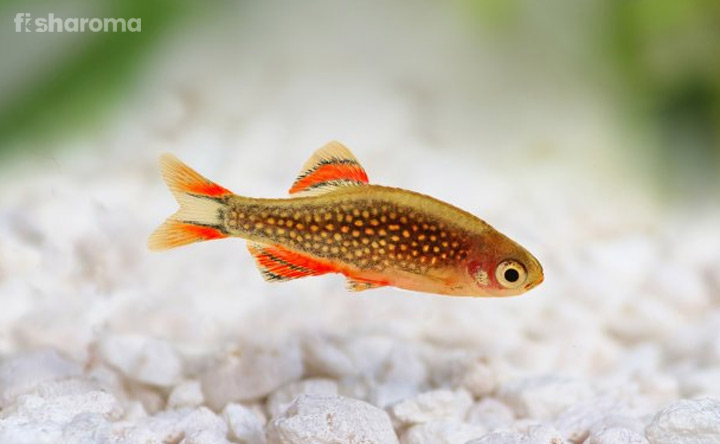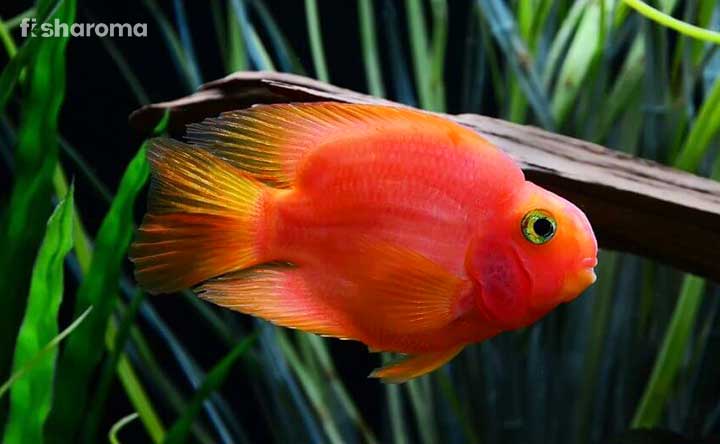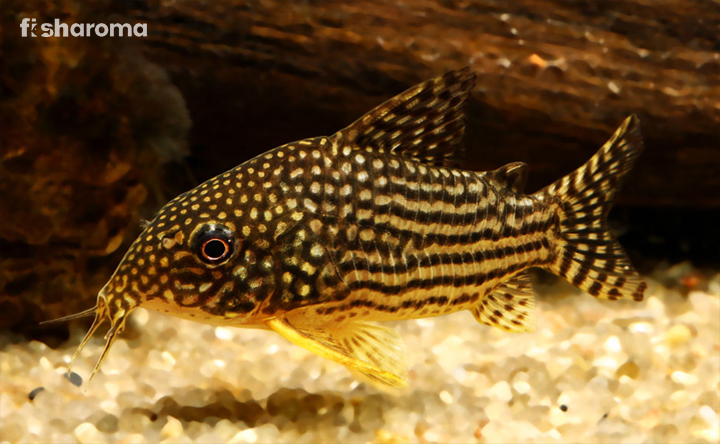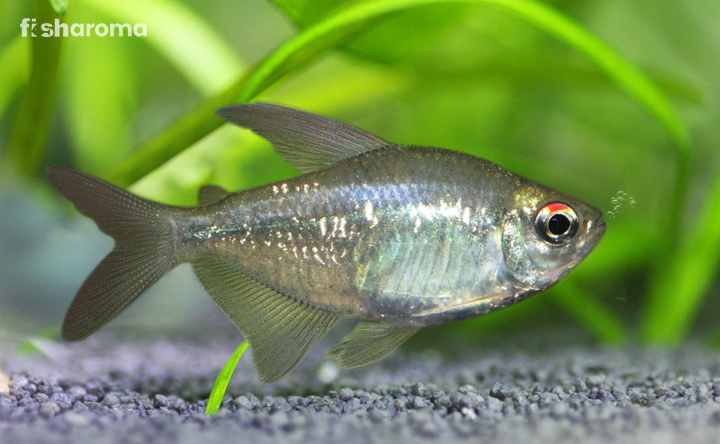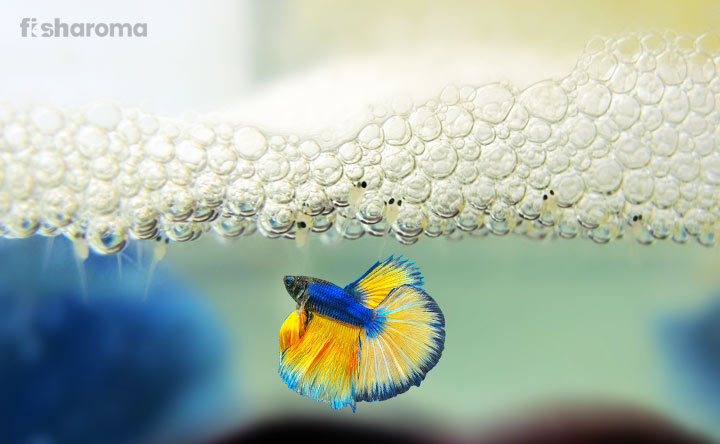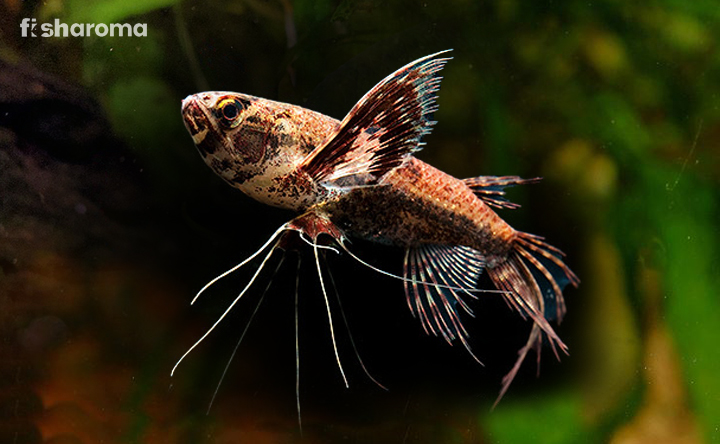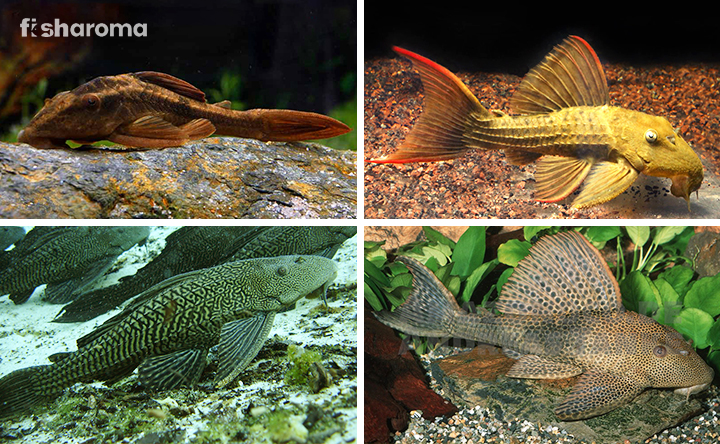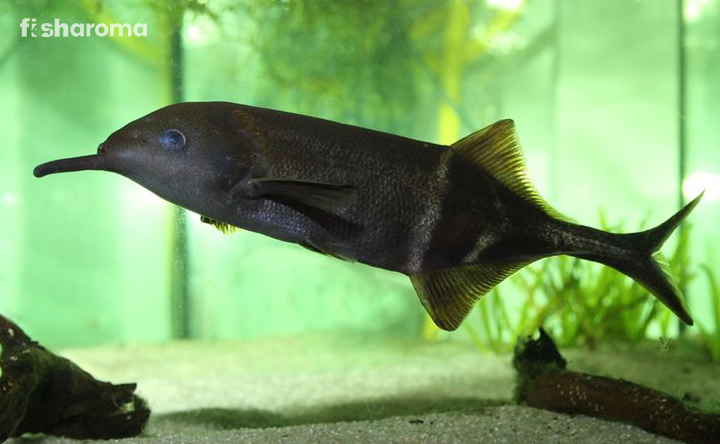Black Ghost Knifefish Care Guide – Tank Requirements, Diet, Breeding, and Much More

- Origin & Habitat of Black Ghost Knifefish
- Appearance of Black Ghost Knifefish
- Behavior of Black Ghost Knifefish
- Lifestyle of Black Ghost Knifefish
- Diet of Black Ghost Knifefish
- Tank Requirements for Black Ghost Knifefish
- Water Type for Black Ghost Knifefish
- Compatibility of Black Ghost Knifefish
- Breeding of Black Ghost Knifefish
- Black Ghost Knifefish Diseases
- Summary
A mystical appearance, a feisty temperament, and a history of folklore – a Black Ghost Knifefish has all the ingredients of a dynamic aquarium pet. Wondering how you can host one of them at your home? Let our extensive care guide help you in figuring out the steps and actions you need to take in order to provide a natural environment for them.
Key Specifications of Black Ghost Knifefish
The following table will help you get a grasp on the key specifications of a Black Ghost Knifefish that, in turn, would aid you in petting them healthily.
| Scientific Name | Apteronotus albifrons |
| Family | Apteronotidae |
| Origin | South America |
| Size | 20” (50.8 cm) |
| Color | Black |
| Care Level | Intermediate |
| Lifespan | 10-15 Years |
| Temperament | Semi-Aggressive |
| Compatibility | Low |
| Tank Size | 100-Gallons Minimum |
| Diet | Mostly Omnivores |
Overview
Black Ghost Knifefish sports one of the most unconventional looks among freshwater aquarium species that draws attention from anyone who lay their eyes on them. With the demand for unorthodox pet fish on the rise, it’s no wonder why in recent years the popularity of Black Ghost Knifefish has seen a sharp steep.
Belonging to the Apteronotidae family, they are known for their ability to sense and produce electric signals in the water. They are also known as Black Knife and Apteronotus Eel.
Origin & Habitat of Black Ghost Knifefish
Native to the Amazon River in South America, the Black Ghost Knifefish spend most of their time in heavily vegetative areas since that serve as excellent hiding spots for them. This tropical fish is also seen in sandy bottom creeks that have a fast flow of water. Usually, the water that they live in is murky and has less access to light.
During the monsoon, these freshwater species are often seen migrating to flooded forests. Their surroundings are mostly dark, which speaks volumes about their poor vision.
From the tributaries of Paraguay to Venezuela, they can be found all throughout the Amazon River basin, and even in the freshwater basins of Peru.
Appearance of Black Ghost Knifefish
When it comes to aquarium pets, one of the biggest factors that dictate our choice is their appearance. And with them, we are sure you won’t be disappointed.
They sport an elongated-flat body that resembles the shape of a knife. Although they don’t have any dorsal or caudal fins, they have a prominent anal fin that stretches from their belly to their tail. This is also the reason behind their graceful swimming style.
One of the most interesting features about their appearance is that they do not have any scales, which is why they are so highly sensitive to water conditions.
As we have said earlier, they have the ability to receive and produce electric signals. They produce these signals through an organ that is present in their tail.
Size of Black Ghost Knifefish
They are one of the largest freshwater aquarium pets that can you host in a home tank. They grow up to 20” (50.8 cm) on average.
Color of Black Ghost Knifefish
Black Ghost Knifefish have a jet-black body; however, in some rare individuals, you will see a thin white stripe running from the tip of their nose to the top of their back. They also have two small white rings on their tail and a white blaze on their nose.
Behavior of Black Ghost Knifefish
Owing to the fact that they live in a dark environment in the wild, they are nocturnal creatures. Although they have a semi-aggressive temperament, they are pretty easy to tame and pet.
They do display shyness in their behavior when subjected to a new environment, especially a captive one like the fish tank of your home. However, with the right condition provided to them, they can adapt easily.
This splendid creature is also a skilled hunter, using their electric field to hunt down their preys. They also communicate with each other with the help of this electric field.
Lifespan of Black Ghost Knifefish
Compared to most other freshwater aquarium pets, they have a longer lifespan; living up to 15-20 years if provided with the right living conditions.
Diet of Black Ghost Knifefish
Although they are mostly omnivores, some exclusively feed on meaty products, making them carnivores. In their natural habitat, they survive by consuming various types of worms, insect larvae, and other small fish.
Remember, their diet should be rich in vitamins and minerals so that their immune system stays healthy and strong. Feed them that much food which they can consume within two minutes.
Overfeeding will have adverse effects on their health. In addition, avoid feeding them dry food. Feeding them will test your patience since they are usually shy in the initial stages of captivity.
A proper diet for a Black Ghost Knifefish must include the following:
- Bloodworm (Both live and frozen)
- Blackworm (Both live and frozen)
- Brine Shrimp (Both live and frozen)
- Small prawn
- Krill
- Cricket
- Tubifex Worm
They are accepting of pellets and flake food, but they do need time to get used to them. Young Black Ghost Knifefish should be fed baby Brine Shrimp.
Since Black Ghost Knifefish are nocturnal creatures, try feeding them in evening and night.
Tank Requirements for Black Ghost Knifefish
In order to make a them feel at home in its tank, try to maintain the following tank requirements.
Tank Size
Your typical fishbowl won’t suffice for this humongous freshwater species. Given their size, you would need at least a 100-gallon tank for them.
Filter
You have to use a high-quality filter for the tank that hosts a Black Ghost Knifefish. A UV sterilizer or a canister filter will get the work done here. The filter must generate moderate current in your tank since that would reflect the natural water conditions of this species.
Nature of Lighting
As their natural habitat doesn’t have great access to light, try to replicate the same in your tank. Now, we do understand that you want your fish to be properly seen by others, but including high-intensity light will jeopardize with their health. Low to moderate lighting is recommended for them.
Presence of Flora
Their living environment in the wild is rich in vegetation which provides shade and shelter to them. Therefore, don’t back out from introducing a couple of freshwater aquatic plants in their tank.
Substrate
Being the bottom-dwelling fish that they are, a lot of thought must be put in deciding the kind of substrate you would have in your tank. Also, don’t forget that they are a scaleless fish, which makes them more prone to cut and bruises.
Thus, any harsh or spiky substrate is a strict no-no in this scenario. A fine sand-based or a gravel-based substrate will suit them perfectly.
Ornaments
In the wild, these fish spend a considerable amount of their time in nooks and crannies to hide themselves. So, try to include smooth pebbles and rocks along with aquarium safe wood that may serve as hiding spots for them. Make sure they don’t have any sharp edges in order to avoid injuries.
Cleaning Method
A monthly clean-up of the tank would ensure the good health of your pet. Regular scraping off algae and slime from the glass wall, plants, ornaments, and substrate would put an end to the possibility of an algae infestation.
While cleaning the substrate and ornaments, try not to use any soap-based product as it may harm your fish. The same applies to the cleaning of your glass walls. Just clean the ornaments and substrate under running water. Use a cloth and lukewarm water to wipe off the glass walls.
Water Type for Black Ghost Knifefish
They are extremely sensitive to any change in their water type. Thus, try to be very attentive when dealing with this area. The following factors must be followed to personalize the water to their preference.
Temperature
They are built to survive in slightly warmer water. So, a moderate temperature of 73-82° F (22.8-27.8° C) has to be maintained in their tank.
pH Level
These fish prefer neutral water; which is why keeping the pH level anywhere around 6-8 is recommended.
Hardness
The general hardness of the water should be 5-19 dGH, which falls under soft to medium water.
Replacement Procedure
Just like the other physical aspects of a tank, the water experiences a lot of contamination over time. A regular replacement of the tank water is what keeps it healthy.
However, there is one thing that you need to keep in mind while conducting this process. Never replace all of the water at once since doing so will create an ecological imbalance in the tank. In addition, a lot of the beneficial bacteria will also get killed in the process.
The following table shows what percentage of water should be changed at what time interval. You can pick any of the three replacement schedules from underneath. Whatever you pick, try and commit to it.
| Time Interval of Water Change | Percentage of Total Water to be Replaced |
| Weekly | 10% |
| Bi-weekly/Fortnightly | 20% |
| Monthly | 40% |
The new batch of water that you introduce in the tank should be of the same temperature, hardness, and pH level as that of the existing batch of water.
Compatibility of Black Ghost Knifefish
Hosting more than one Black Ghost Knifefish in a tank should only be done when you have an extremely large tank because of their territorial nature. They are known to become aggressive with their own species.
For a single fish, you would require 80-100 gallon of water. So, you can imagine how big of a space you would need to keep more than one Black Ghost Knifefish together.
Suitable Tankmates of Black Ghost Knifefish
As long as they are fed properly and have enough space to themselves, they mostly would keep to themselves and will not disturb other species. Thus, they make for great tankmates for a community aquarium.
Large and peaceful aquarium species can be kept with a Black Ghost Knifefish, including the following.
- Catfish
- Cichlid
- Angelfish
- Corydoras
- Discus
Any species of at least 6” (15 cm) can be kept with this fish. However, when it is still in its infancy, you can keep it with other small fish such as Rasbora, Barb, Tetra, and Guppy.
Unsuitable Tankmates of Black Ghost Knifefish
Avoid keeping this freshwater species with aggressive fish. Small species such as shrimps and snails should also be avoided since Black Ghost Knifefish may mistake them for food.
Breeding of Black Ghost Knifefish
They are extremely difficult to breed in home tanks. Only a few commercial fisheries in Indonesia have claimed to successfully bred them.
The factors behind their difficult breeding are as follows:
- Their large size demands a huge breeding tank, close to 200 gallons.
- Finding two mature fish that are compatible with each other is a rarity.
- Creating a noise-less and dark environment that is free of excessive movement at home is next to impossible.
- Constantly maintaining the desired water temperature.
- Consistent replacement of 25-50% the tank water every two days to reflect the ‘wet season’ which is the breeding season of this fish.
- The female often refuses to lay eggs when it doesn’t feel safe.
- Providing adequate pebbles and plants that will keep the eggs away from being eaten away by the parents.
Thus, breeding them is not recommended.
Black Ghost Knifefish Diseases
Black Ghost Knifefish are vulnerable to Ich disease. If you notice them trying to rub themselves against the glass wall or substrate of your tank, then you should understand that they are suffering from it.
In this situation, all you need to do is to increase the temperature of the water to 86° F (30° C) because at a higher temperature, the parasites that cause this disease stops reproducing and growing.
Maintaining a healthy diet and keeping the tank clean also ensures that your pet won’t fall for any dreadful disease.
Interesting Facts about Black Ghost Knifefish
- There is a belief among some Amazonian tribes that the souls of the dead inhabit this fish. Hence their middle name is ‘Ghost’.
- Females emit higher electric frequencies than their male counterparts.
- If trained properly, these fish can be fed directly from their owner’s hands.
Summary
Black Ghost Knifefish is not your average aquarium pet. Having one of the most interesting body shapes in the aquatic world, they are a semi-aggressive freshwater species that are mostly omnivores by nature.
They are known for their graceful swimming style that makes for an exciting spectacle in your aquarium. This nocturnal creature will definitely add an unconventional charm to your house. And with our care guide, we hope you will be able to grow them healthily in your tank.
Care Guide of Other Freshwater Fish
Find out the care guides of some of our other freshwater pets.
- Harlequin Rasbora: Peaceful by nature, this fast-moving swimmer will keep you enthralled with their charm.
- Cherry Barb: Interested in having a school of fish in your tank? Let these red-lighters inhabit your aquarium.
- Crowntail Betta: Owner of one of the most magnificent fins in the aquatic world, this semi-aggressive fish is the ultimate ornate pet you need.

